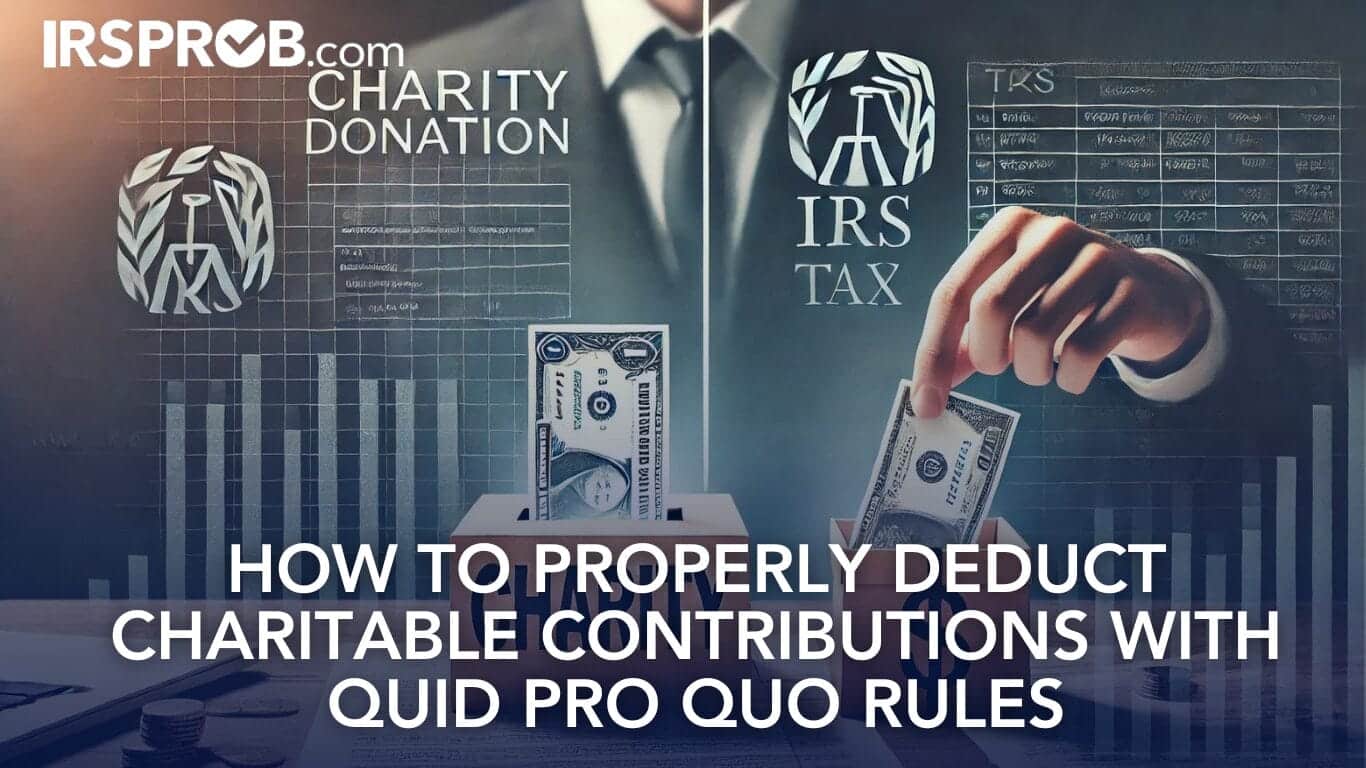
When it comes to charitable giving, the IRS provides guidelines that ensure donors can take full advantage of tax deductions, while also keeping everything above board. Understanding these rules is crucial for business owners who frequently make charitable contributions, particularly when those donations come with something in return—a situation known as a “quid pro quo” contribution.
What is a Quid Pro Quo Contribution?
In simple terms, a quid pro quo contribution occurs when you make a donation to a qualified charitable organization and, in return, receive something of value. This could be a meal at a fundraising dinner, a ticket to a concert, or even a physical item like a piece of artwork or memorabilia. The key is that the IRS allows you to deduct only the portion of your donation that exceeds the fair market value (FMV) of the benefit you received.
For example, let’s say you and your spouse attend a charity gala, and the tickets cost $100 each. If the fair market value of the meal provided at the event is $40 per person, your charitable deduction would be limited to $120 ($200 total donation minus $80 FMV).
Disclosure Requirements: Keeping it Transparent
The IRS has specific disclosure requirements for quid pro quo contributions to ensure that everything is transparent. If the total donation amount exceeds $75, even if the deductible portion is less than $75, you must obtain a written disclosure statement from the charity. This statement should include:
- A Clarification of Deductibility: The statement should specify that the deductible portion for federal income tax purposes is limited to the amount contributed over the FMV of the goods or services received.
- Good-Faith Estimate of FMV: The charity must provide a good-faith estimate of the FMV of the goods or services you received.
However, there are exceptions to this rule. No disclosure statement is required if you receive items of “insubstantial value”—like a keychain or a mug with the charity’s logo—or if you receive an intangible religious benefit, such as attending a religious ceremony with no admission charge.
Determining Fair Market Value
Determining the FMV of the goods or services you receive can sometimes be tricky. The IRS allows charities to use any “reasonable method” to estimate the FMV. Here are a few examples provided by the IRS to illustrate how this might work:
- Example 1: A charity offers a one-hour tennis lesson with a professional as part of a donation package. If such a lesson would normally cost $100, the charity should use $100 as the FMV.
- Example 2: A donor pays $50,000 to hold a private event at a museum. The FMV could be estimated by comparing it to the cost of renting a similarly-sized ballroom at a hotel, even if the museum offers a unique atmosphere. If the hotel ballroom rents for $2,500, that would be considered the FMV.
- Example 3: A charity offers an evening tour of a museum conducted by a well-known artist who does not usually provide tours commercially. If the museum typically offers free tours, the FMV of this event could be considered $0, even though the artist leads the tour.
Additional Tax Considerations
In addition to the quid pro quo rules, other tax provisions apply to charitable donations. For instance, the deduction for cash gifts in 2024 cannot exceed 60% of your adjusted gross income (AGI). If your donations exceed this limit, you can carry over the excess deduction for up to five years.
It’s also important to note that charitable donations are only deductible if you itemize your deductions on your tax return. This means that if you take the standard deduction, you won’t be able to deduct your charitable contributions.
Attending a Charitable Auction? Be Prepared
If you’re planning to participate in a charitable auction, it’s important to understand the tax implications of any winning bids. Much like with quid pro quo donations, you can only deduct the amount you pay above the fair market value of the item or experience you win. For example, if you win a piece of artwork valued at $500 for a bid of $1,000, your charitable deduction would be $500.
Conclusion: Stay Informed and Maximize Your Deductions
Charitable giving is not only a generous act but also a smart tax strategy when done correctly. As a business owner, staying informed about IRS rules and guidelines ensures you maximize your deductions while remaining compliant with tax laws. Always keep detailed records of your contributions, including the FMV of any benefits received, and be sure to obtain the necessary disclosure statements when required.
By carefully navigating the quid pro quo rules and other tax provisions, you can continue to support the causes you care about while also making the most of your charitable deductions.







